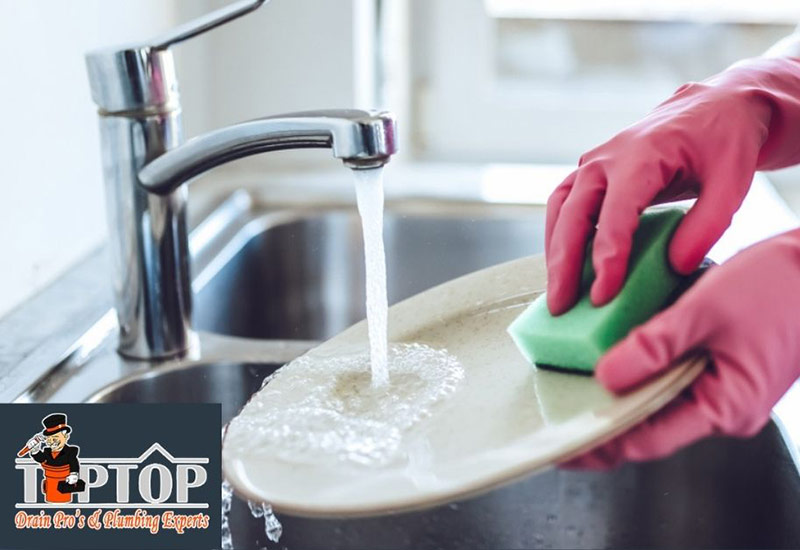Your Least Favorite Chore
Taking out the garbage, vacuuming the floors, and doing laundry isn’t necessarily your favorite thing to do. But there is likely no chore more widely hated than doing the dishes. While you may despise taking care of this nightly duty, washing your dishes is something you can’t avoid — unless you make the kids do it!
If you’re without a dishwasher, this task can become even more of a burden, not just on the one doing the washing, but on your water bill as well! The average dishwashing session uses about 20 gallons of water!
Here are a few of our tips for those without a dishwasher to keep water waste down and get the dishes clean in an efficient way! So pull on your gloves and let’s dive in.
1. Scrape
After dinner, gather up all your dishes and scrape every last bit left on them into the garbage. Doing this as soon as possible is best, as it keeps food from drying and becoming harder to wash off!
2. Pre-Rinse
Plug your kitchen sink and add a few inches of hot water to the basin. There’s no need to fill the entire sink in this step, as you’ll simply be using this water to wipe away any residue left on the dishes. Once you’ve done this for every dish, the water is likely becoming murky and food filled, so go ahead and drain it.
3. Get Soapy!
Now it’s time to bring on the bubbles. Once again, fill your sink with just a few inches of hot water and add dish soap. Starting with the smallest dishes, use your sponge and wash them off in soapy water. Then, using the same basin, turn the hot water on for a quick rinse.
Because you only filled the sink a few inches, this added to water during the quick rinse will fill up the soapy water basin so that when it comes time to wash the bigger pots and pans, you’ll have plenty of suds to do so! Set the dishes aside to dry, or have a helper with a towel ready to hand over wet dishes too.








